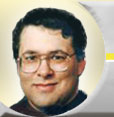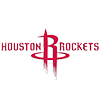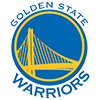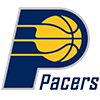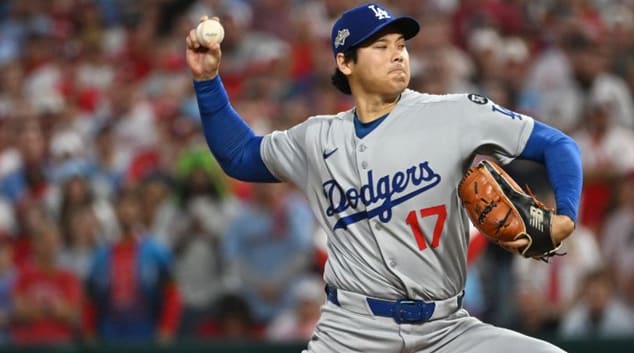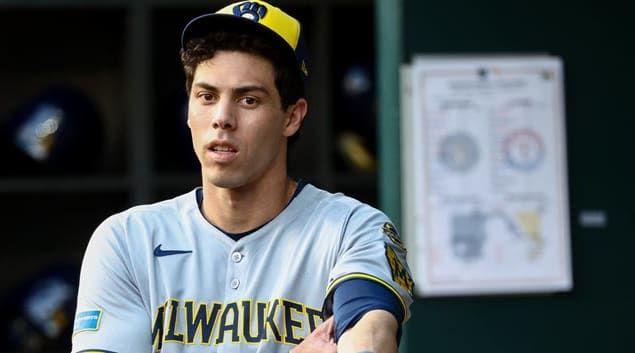With the 2010 Baseball Draft approaching rapidly, here is a look at 50 Top Prospects who are likely to be selected in the first round and the supplemental round. This is NOT a mock-draft prediction matching team to player, but rather a look at the players themselves. This is the Top 25; the second 25 will appear in our next article later this week.
1) Bryce Harper, C, College of Southern Nevada
Just 17 years old, Harper is destroying junior college competition in a wood-bat league, demonstrating outstanding power and better-than-expected defensive skills. He is the best hitter in this draft by far and one of the best hitters his age in the draft era. Concerns about his makeup were raised a few weeks ago, but he's been a model citizen of late and no one has ever questioned his work ethic or drive to succeed. He's a man among boys, and it is hard to imagine the Nationals passing him up.
2) Jameson Taillon, RHP, The Woodlands, Texas, HS
The top high school arm in the draft, Taillon features a 98 MPH fastball, a nasty curve, and better command than most pitchers his age. He would be the clear number one talent available if not for Harper. He has a Rice scholarship, but isn't expected to be an impossible sign if he goes as early in the draft as expected.
3) Manny Machado, SS, Brito Private HS, Hialeah, Florida
Machado is a very fine defensive shortstop with above
With the 2010 Baseball Draft approaching rapidly, here is a look at 50 Top Prospects who are likely to be selected in the first round and the supplemental round. This is NOT a mock-draft prediction matching team to player, but rather a look at the players themselves. This is the Top 25; the second 25 will appear in our next article later this week.
1) Bryce Harper, C, College of Southern Nevada
Just 17 years old, Harper is destroying junior college competition in a wood-bat league, demonstrating outstanding power and better-than-expected defensive skills. He is the best hitter in this draft by far and one of the best hitters his age in the draft era. Concerns about his makeup were raised a few weeks ago, but he's been a model citizen of late and no one has ever questioned his work ethic or drive to succeed. He's a man among boys, and it is hard to imagine the Nationals passing him up.
2) Jameson Taillon, RHP, The Woodlands, Texas, HS
The top high school arm in the draft, Taillon features a 98 MPH fastball, a nasty curve, and better command than most pitchers his age. He would be the clear number one talent available if not for Harper. He has a Rice scholarship, but isn't expected to be an impossible sign if he goes as early in the draft as expected.
3) Manny Machado, SS, Brito Private HS, Hialeah, Florida
Machado is a very fine defensive shortstop with above average range and arm strength. His bat has developed well this spring, making him a complete player and the best-rounded high school talent available according to most observers. Signed with Florida International University, he should be signable.
4) Drew Pomeranz, LHP, University of Mississippi
Pomeranz has been erratic this spring, hitting the mid-90s early but seeing his velocity tail off as the spring progressed. He's still considered an elite talent, at least in part due to his big-breaking curveball and southpawness. He will still go somewhere in the Top Ten.
5) Yasmani Grandal, C, University of Miami-Florida
Scouts have always respected Grandal's defense, but the development of his bat this spring has thrust him up the draft boards, from a possible supplemental round pick into the higher echelons of the first round. He has both power and plate discipline. He could end up in the top five if current rumors hold true, and that won't be an overdraft.
6) Chris Sale, LHP, Florida Gulf Coast University
Sale has been steady and consistent all spring, throwing strikes with his 91-95 MPH sinking fastball, mixing in a top-notch changeup and a solid slider. He's a relatively safe choice but also has upside, throwing harder than the stereotypical polished college lefty.
7) Dylan Covey, RHP, Maranatha HS, Pasadena, California
After Taillon, there is mixed opinion about who is the best high school pitcher in the class. Covey has an excellent balance between stuff (91-97 MPH< plus curve, good changeup) and sharp command. A University of San Diego commitment gives him some leverage, but he shouldn't be impossible to sign in the first round.
8) Stetson Allie, RHP, St. Edward HS, Olmstead Falls, Ohio
Allie's stuff is second only to Taillon's, hitting 96-98 MPH consistently with a sharp breaking ball. Improved command and control has resulted in a rise in his stock over the last month, and he seems a lock for the top ten picks at this point. A North Carolina scholarship gives him a good fallback option, but he should be signable if he goes as early as expected.
9) Karsten Whitson, RHP, Chipley HS, Florida
Whitson doesn't throw as hard as Taillon or Allie, but still gets his fastball into the low 90s and mixes it with an sharp slider and excellent changeup. His command is top-notch and scouts love his mound presence. He has leverage with a University of Florida commitment, but should be signable if he is drafted where his talent dictates.
10) Zach Cox, 3B, University of Arkansas
Cox features a very polished line drive hitting approach and a good glove at third base. The main question is power: he may not be a huge home-run hitter against higher-level pitching. But his other skills attract scouts, his makeup is highly-regarded, and he's not exactly punchless.
11) Christian Colon, SS, Cal State Fullerton
Some scouts wonder if Colon will have the range to play shortstop in the majors, but others believe he will. Few doubt his bat: he has decent power, a polished approach with strong plate discipline, and an excellent track record against top college competition. He won't need long in the minors.
12) A.J. Cole, RHP, Oviedo HS, Florida
Cole is not quite as polished as fellow preps Taillon, Covey, and Whitson, but his stuff is first class at 93-97 MPH and he has a strong curveball. He also has some remaining physical projectability, and is unlikely to last past the top 20 picks. He has a University of Miami-Florida commitment to give him negotiating leverage.
13) Deck McGuire, RHP, Georgia Tech
McGuire draws raves for his polish and pitching instincts, and he has good stuff too, featuring a 90-93 MPH heater, a slider, a curveball, and a changeup. He throws all four pitches for strikes, and won't need much time in the minor leagues.
14) Brandon Workman, RHP, University of Texas
Workman's stock has risen steadily all spring, and he's not even the best pitcher (statistically) on the pitching-rich Longhorns. He has the best arm, though, with a low-to-mid-90s fastball and an improved curveball and changeup this spring.
15) Matt Harvey, RHP, University of North Carolina
Like Workman, Harvey's stock has risen, thanks to revamped mechanics enabling him to throw his 92-97 MPH fastball and hard slider for strikes more often. He's overpowering, but concerns about his heavy workload, erratic track record, and Scott Boras ties might hurt his stock slightly on draft day, though he should still go in the first round.
16) Michael Choice, OF, University of Texas-Arlington
Choice has drawn an amazing 70 walks this year, thanks to his own patient eye as well as a weak UTA lineup that enables other teams to pitch around him. He has excellent raw power, but the rest of his tools are average. Still, the power and patience should play at higher levels and in a weak hitting class, his talents stand out.
17) Nick Castellanos, 3B, Archbishop McCarthy HS, Davie, Florida
Castellanos has substantial power potential and more polish than most hitters his age. He will move from shortstop to third base as a pro, but has the range, arm strength, and athleticism for the position. Another Miami recruit, his price tag may be large, and his draft standing may not fully reflect his true talent level as a result.
18) Kaleb Cowart, 3B-RHP, Cook County HS, Adel, Georgia
Most scouts prefer Cowart as a pitcher due to his 90-92 MPH fastball, good curveball, and projectability, but he's a strong hitter as well and wants to play third base in pro ball. He has enough leverage with a Florida State scholarship to get his way on draft day.
19) Josh Sale, OF, Bishop Blanchet HS, Seattle, Washington
Sale has an explosive bat and probably has the most raw power of any high school hitter in this class. His other tools are mediocre and hurt his stock just enough to keep him out of the top ten picks, but even as a left fielder he projects as a big-league regular with plus-plus power. He is committed to Gonzaga but is signable in the first round.
20) Brett Eibner,RHP-OF, University of Arkansas
Like Cowart, Eibner is an excellent athlete and a strong two-way player who wants to hit, but who scouts prefer on the mound. He's shown massively improved command of his 93-95 MPH fastball, breaking ball, and changeup this spring, but also has intriguing power/speed potential in the outfield. He is a first-round talent either way.
21) Austin Wilson, OF, Harvard Westlake HS, North Hollywood, California
Possibly the best pure athlete of any of the high school players, Wilson has plenty of speed and outstanding power potential, but is rather raw. He's also highly intelligent, academically-oriented, and has a Stanford scholarship in his pocket. Anyone drafting him will have to spend big bucks to bring him on board, but the payoff could be something like a young Jermaine Dye or Dave Winfield, if all goes well.
22) Aaron Sanchez, RHP, Barstow HS, California
Sanchez is the epitome of projectability, already throwing 90-92 MPH at age 17, with more velocity to come as he fills out. His control isn't bad and his curveball and changeup are also promising. He has a University of Oregon commitment, but should be signable if drafted early enough.
23) Alex Wimmers, RHP, Ohio State University
Although slowed by a hamstring injury in recent weeks, Wimmers should still be a first round candidate due to his superb command of a 90-93 MPH fastball, plus curve, and plus/plus changeup. He reminds scouts of Reds pitcher Mike Leake, although Wimmers will need at least some minor league time.
24) Gary Brown, OF, Cal State Fullerton
If you like speed, athleticism, and defense, Brown is your guy: there are few better pure athletes in this draft class. He's shown better power this year, but remains an impatient hitter who seldom draws walks. He doesn't strike out very much, either, and the lack of patience hasn't hindered his production against college pitching.
25) Bryce Brentz, OF, Middle Tennessee State University
Brentz has excellent power and a strong throwing arm, and has overcome a mid-season ankle injury to retain his projected first round status. He sometimes struggles with breaking balls and plate discipline, and there's some question about what his batting average and OBP will look like against pro pitching. These questions won't keep him out of the first round.
Stay tuned for Part Two coming later this week.
Article first appeared 5/25/10



